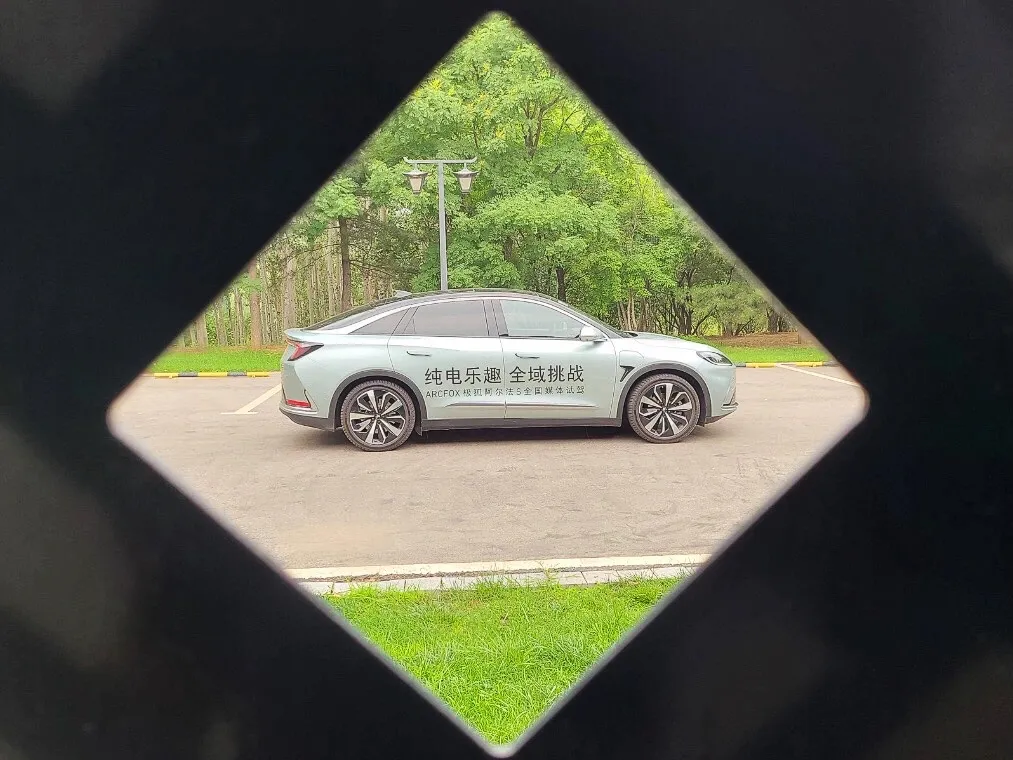ARCFOX αS by Beijing Automotive Group subsidiary JI HU x (JH) is a pure-electric C-class sedan, as well as a car equipped with the Huawei autonomous driving solution that became popular not long ago.
This time around, I test drove the ARCFOX αS Huawei HI edition that does not come with the Huawei autonomous driving solution, which suited me perfectly because I could ignore Huawei’s label and focus on the JI HU x brand to experience the power of their second car that was released just in 2016.
“On Paper Performance”
Before delving into the driving experience of the ARCFOX αS, it is important to understand its on-paper performance. The ARCFOX αS is produced through a collaboration between JI HU x and Magna under the IMC architecture, with four versions available in the entire range, excluding the two Huawei HI editions:
-
ARCFOX αS 525 S: NEDC range of 525 km, subsidized price of RMB 251,900.
-
ARCFOX αS 525 S+: NEDC range of 525 km, subsidized price of RMB 268,900.
-
ARCFOX αS 708 S+: NEDC range of 708 km, subsidized price of RMB 281,900.
-
ARCFOX αS 603 H: NEDC range of 603 km, subsidized price of RMB 344,900.
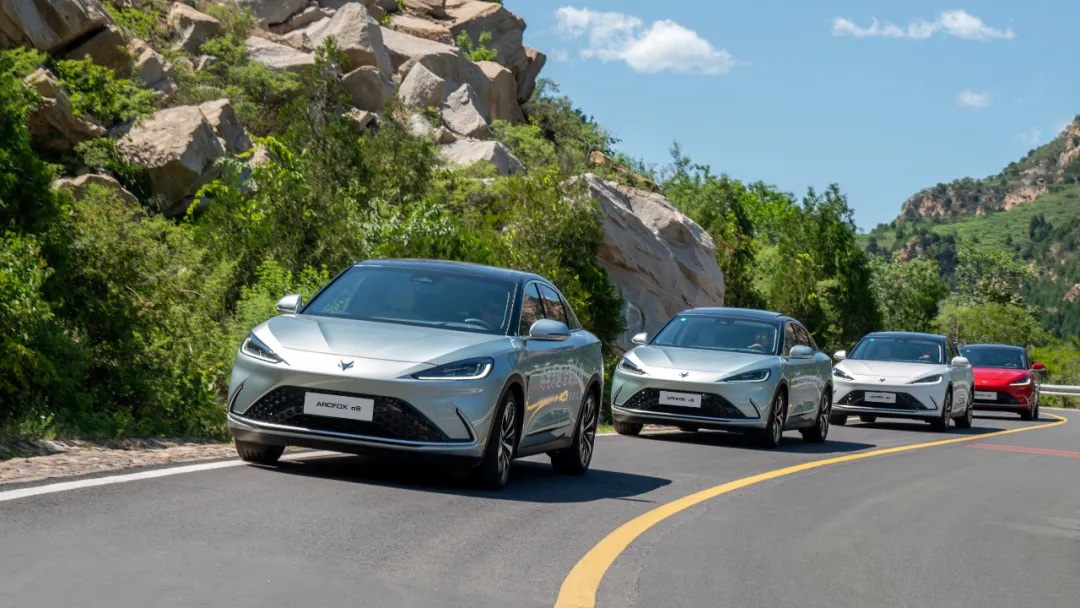
Similar to the ARCFOX αT, the αS offers two battery specifications. The 525 S/S+ models are equipped with a 67.3 kWh battery, while the 708 S+ and 603 H are equipped with a 93 kWh battery.
ARCFOX αS 603 H is the high-performance version equipped with four-wheel drive and electric dual motors, offering maximum power of 320 kW, maximum torque of 720 N·m, and 0-100 km/h acceleration of 4.2 seconds. The other three models are two-wheel drive and equipped with a single electric motor, offering maximum power of 160 kW, maximum torque of 360 N·m, and 0-100 km/h acceleration of 7.7 seconds for 525 S/S+ and 8.3 seconds for 708 S+.
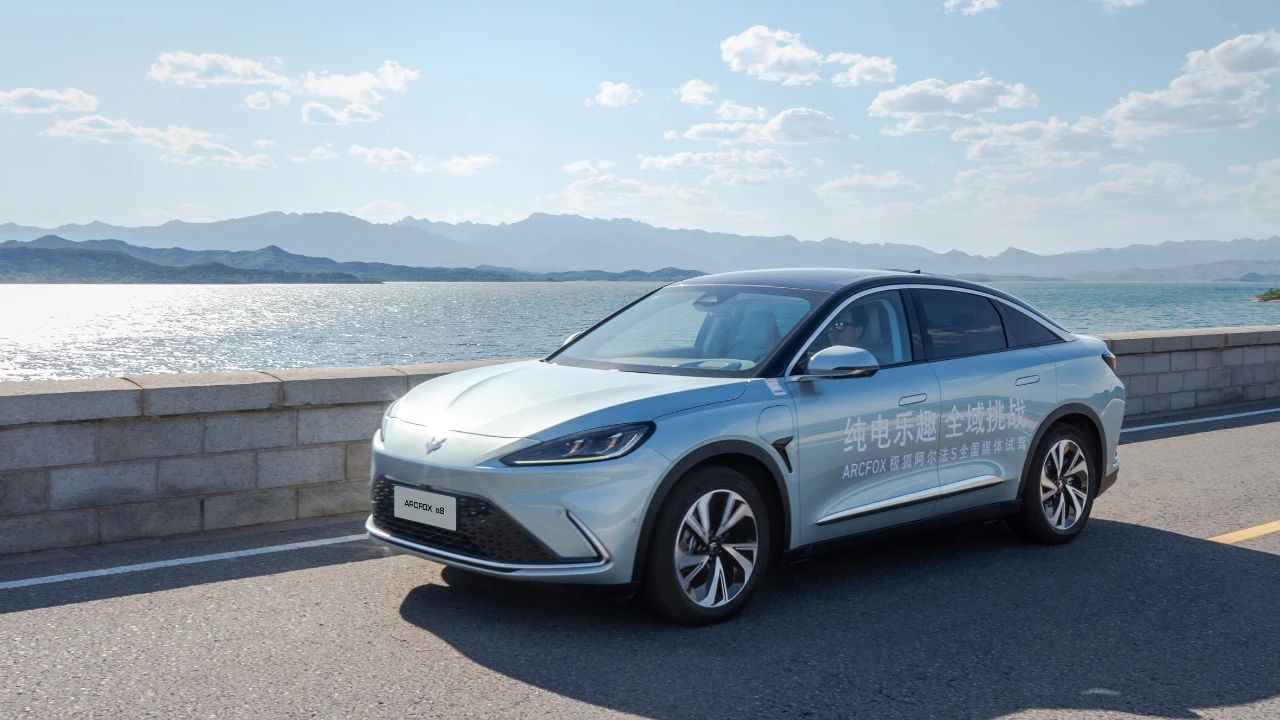
We test drove the high-performance version equipped with four-wheel drive and electric dual motors at Huairou, Beijing, on a winding mountain road with excellent surface conditions. This gave us the opportunity to experience the mechanical performance of this car in greater detail.
“Driving Experience”## ARCFOX αS: The Crossover that Drives Like a Sedan
Although the ARCFOX αS is positioned as a C-class sedan, with a ground clearance of 140mm, a car height of nearly 1.6m, and a liftgate-style tailgate, it looks more like a crossover. In fact, the high-performance version of the ARCFOX αS uses Michelin PILOT SPORT 4 SUV tires.
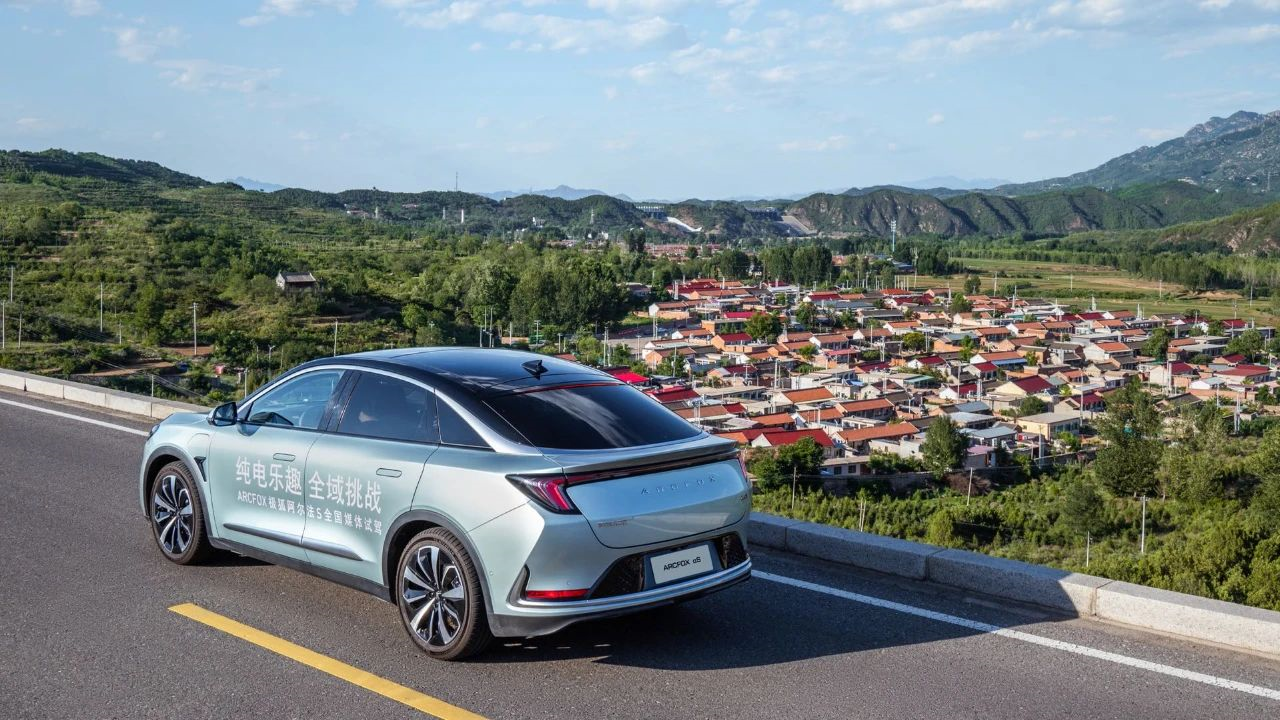
However, when I sat in the driver’s seat of the ARCFOX αS, adjusted the seat and steering wheel, and started driving on the road, I completely forgot whether it was a sedan or an SUV, because my attention was drawn to its optimized chassis.
While electric vehicles have made removing the most complex parts of a car, such as engine and transmission, easier to build, cars are still incredibly complex products. An example of this complexity is the presence of the four main systems of any car chassis: transmission, travel, steering, and braking. Tuning the chassis is still a major challenge for manufacturers.
Returning to the ARCFOX αS, let’s start with the suspension system, which is crucial to the driving experience. During the first half of the test drive on mountain roads, I could feel the ARCFOX αS’s excellent roll control while cornering continuously. The swaying that occurs during cornering in some competitors of the same level did not occur in the ARCFOX αS.
When I simulated a quick overtaking and lane-changing on an open road, I could clearly sense the delay of the ARCFOX αS’s lateral center of gravity following, which greatly improves the vehicle’s stability. It was surprising to see such a suspension tuning capability in a domestic brand vehicle.
It’s important to consider whether the suspension tuning of a mass-produced car is biased or not when evaluating its quality, and mature suspension tuning often achieves a balance between handling and comfort.
After experiencing the handling performance of the suspension, we were curious about how the ARCFOX αS would perform in terms of suspension comfort. So, when we encountered a section of broken asphalt during the test drive, we were particularly attentive to the chassis’s filtering of road bumps. As a result, we could feel the changes in the road inside the car, but the body did not have any violent rebound.
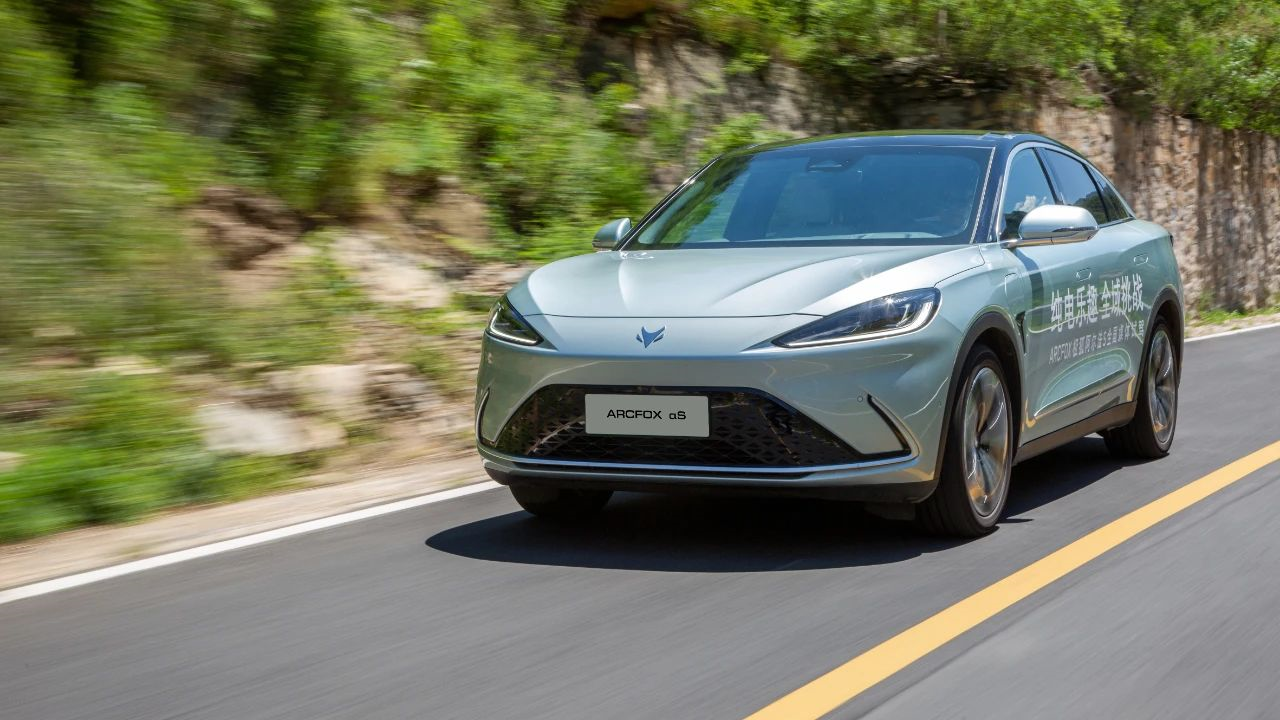 It seems that the resilience of the ARCFOX αS suspension, which was introduced by the official Arctic Fox racing coach before the test drive, is not just an empty promise. Moreover, the coexistence of compactness and softness is achieved through chassis tuning on the basis of the common hardware configuration of front MacPherson and rear multi-link.
It seems that the resilience of the ARCFOX αS suspension, which was introduced by the official Arctic Fox racing coach before the test drive, is not just an empty promise. Moreover, the coexistence of compactness and softness is achieved through chassis tuning on the basis of the common hardware configuration of front MacPherson and rear multi-link.
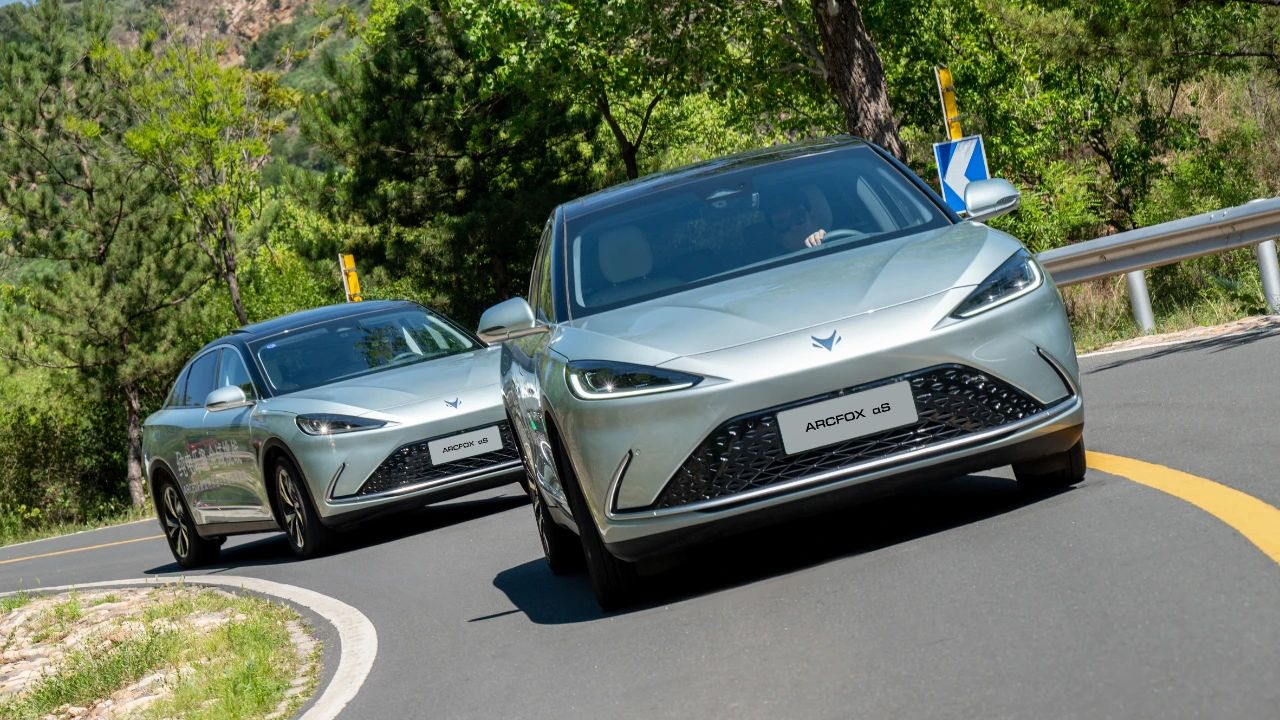
Now let’s talk about the steering of the ARCFOX αS. Maybe due to the limited interior space (after all, it is an electric vehicle, and the ground clearance is still somewhat high due to the battery), I personally think that the steering wheel is a bit too big. However, it feels good to hold, and although the steering force is very light, the damping sensation is obvious. The balance is just right, maintaining the level of the ARCFOX αT.
The throttle response of the ARCFOX αS was another surprise for me. First, the throttle output of the ARCFOX αS is very linear, unlike some electric vehicles in the same class whose initial throttle response is too strong. Using the words of a veteran driver of the same vehicle, “This car’s throttle response reminds me of my barely functional WEY EX5.”
Second, the throttle response logic in different driving modes is very user-friendly. The ARCFOX αS has three driving modes: economical, comfortable, and sport. In the economical mode, the initial throttle response will weaken, but the change will not be too sudden. Similarly, in the sport mode, the initial, middle and later stages of the throttle response will gradually strengthen.
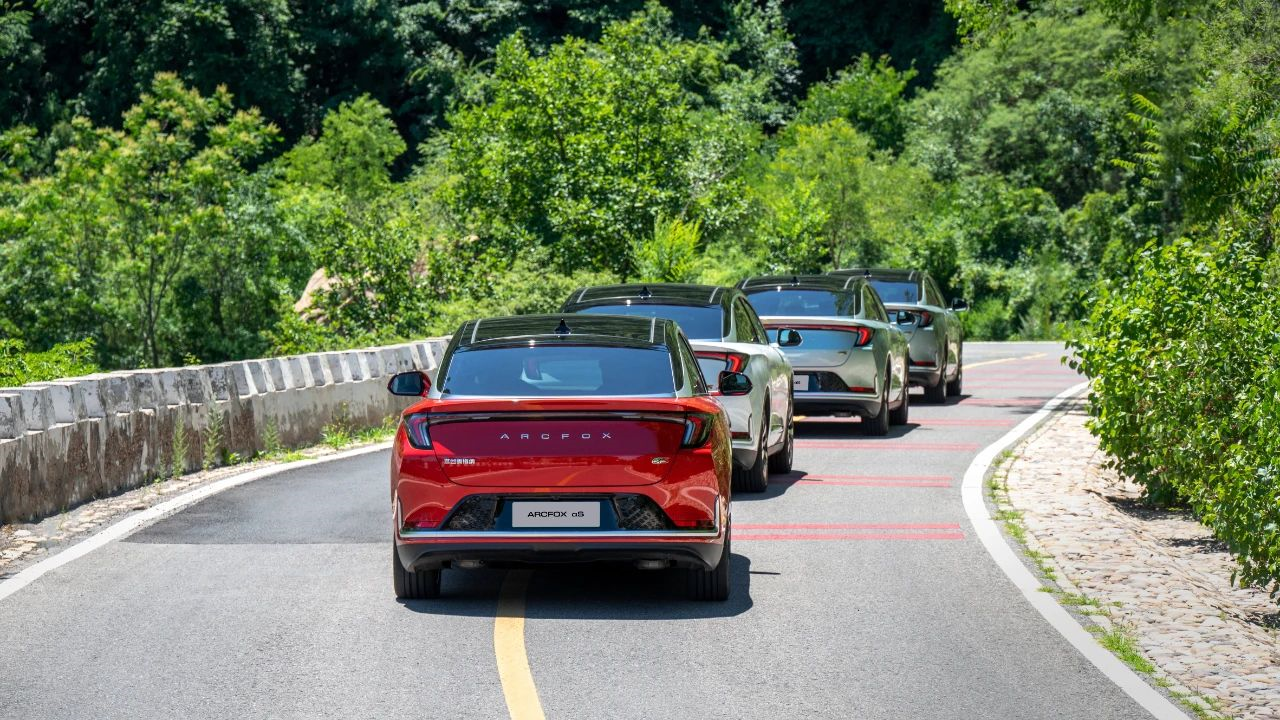
As for the braking of the ARCFOX αS, I think the overall braking is very linear, but there seems to be a phenomenon of lack of response in the early stage of the pedal stroke. When we were driving aggressively during the mountain road stage, we did not feel the intervention of the brakes in the first 0.5 cm of pressing the brake pedal. Of course, this feeling of lack of response when braking is not obvious when driving normally on flat roads.
The ARCFOX αS is a pure electric vehicle, so we must talk about the one-pedal mode. Actually, I didn’t have a good impression of the one-pedal mode before. It’s not that I don’t like this technology, but I think that many one-pedal mode experiences are not good. The intervention of regenerative braking is too strong, and the vehicle’s jolting sensation is very obvious, affecting ride comfort. Returning to the one-pedal mode of the ARCFOX αS, after releasing the accelerator, you can feel that the intervention of regenerative braking is a gradually strengthening process, which effectively avoids jolting sensations.
The mature performance of the chassis tuning of the ARCFOX αS cannot be separated from the cooperation between Arctic Fox and Magna. Magna is the third-largest auto parts supplier in the world and has extensive experience in automotive manufacturing. However, Magna is not the “Foxconn” of the automotive industry.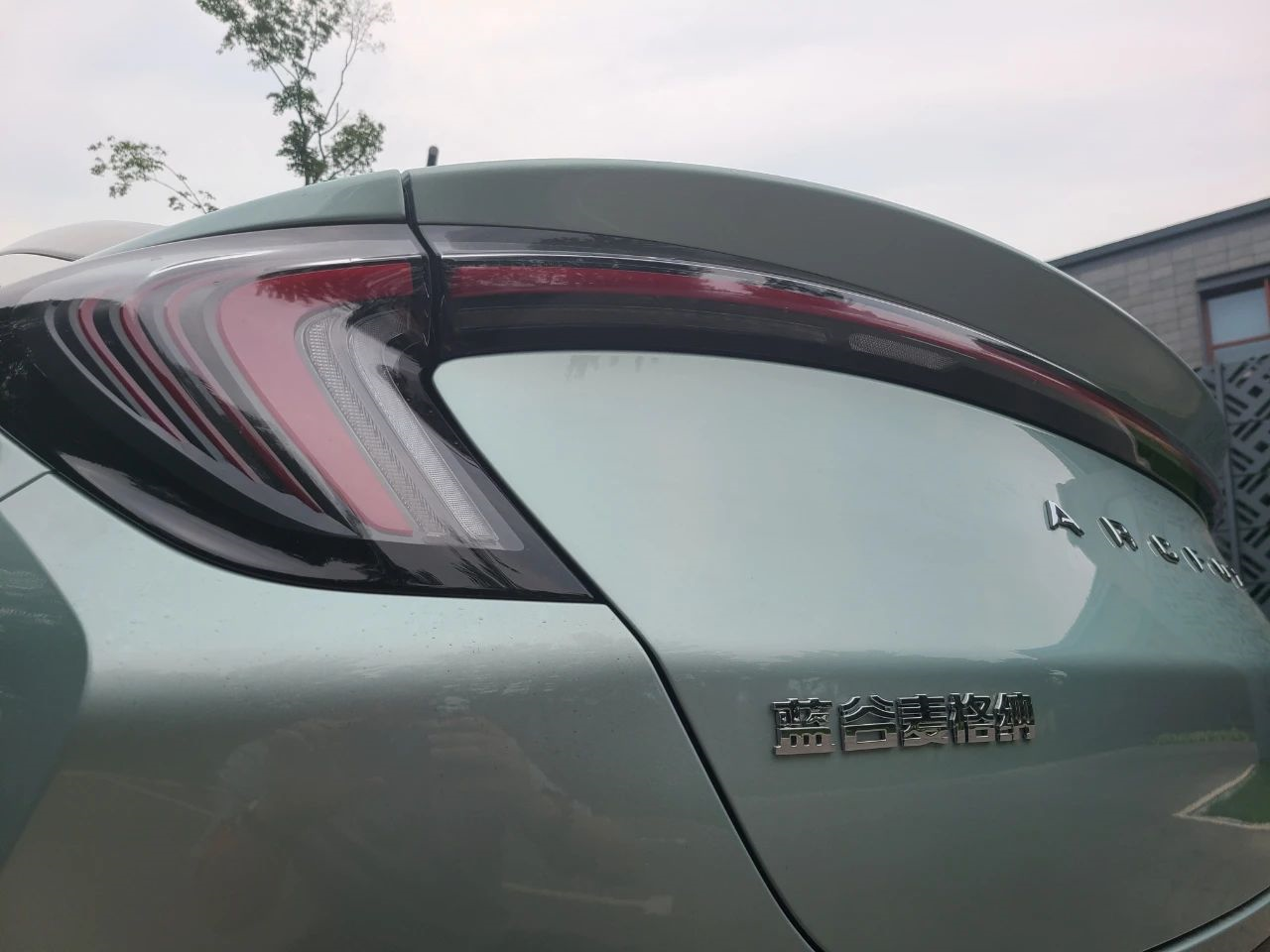
Magna is not just about manufacturing and assembling cars, but is deeply involved in the early research and development of car models, as exemplified by the production of the BMW Z4. For the Z4 project, BMW provided only design requirements and related information, while Magna took care of all aspects from design to manufacturing.
At the same time, Magna is also a supplier of electric motor reducers and electric rear drives, whose products not only include classic fuel models such as BMW 5 Series, Toyota Supra, and Mercedes-Benz G-Class that are produced under contract, but also electric vehicles such as Jaguar I-PACE and Sony Visioni-S Concept Car. Therefore, it is not surprising that BAIC can cooperate with Magna to build a good electric vehicle, fine-tune the mature chassis, and get some outstanding results.
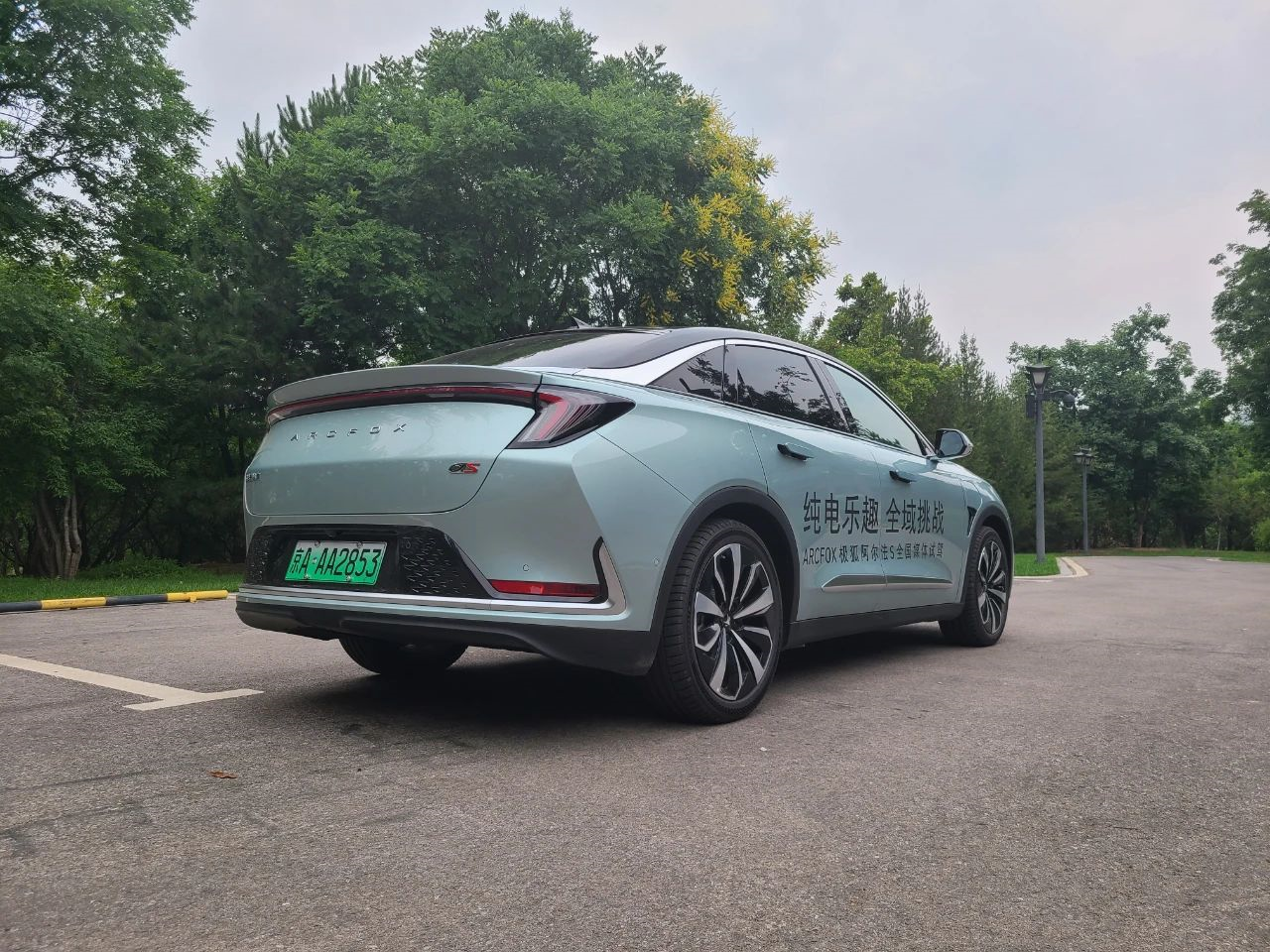
Driving such a mature-tuned chassis electric car with amazing 0-100 km/h acceleration in just 4.2 seconds, it is easy to unknowingly reach a high speed, especially in the case of good NVH. During the test drive, when we raised the speed on a mountain road to 90 km/h or more, the quietness in the car remained very good. Due to the coarse road particles on the highway, tyre noise could be felt when the speed exceeded 100 km/h, but it was completely within an acceptable range.
“Endurance Performance”
▎ARCFOX αS’s long endurance version has an exaggerated NEDC test standard endurance of 708 km, and even our four-wheel drive high-performance version has a rated endurance of 603 km, but we are more curious about the performance of ARCFOX αS in actual use.

In fact, this test drive was a challenge for fuel economy and endurance, but with a car that had such a mature chassis tuning and with excellent road conditions, even including a stretch of single-track mountain road in between, we couldn’t resist the temptation to test the vehicle’s performance limits.
But even after 103 km of “intense driving on mountain roads + short sections of high-speed roads + air conditioning at a comfortable temperature,” the displayed endurance of ARCFOX αS only dropped by 127 km, with an energy conversion rate of 81.10% – even more outrageously, other group vehicles achieved an energy conversion rate of 155%.# ARCFOX αS – Behind the High Energy Conversion Rate
One of the contributors to the high energy conversion rate of ARCFOX αS is BorgWarner’s integrated three-in-one motor. The powertrain supplier also includes Siemens, resulting in a powertrain efficiency of up to 93.5% for ARCFOX αS.
“Smart Technology with Long Way to Go”
▎ARCFOX αS gained popularity due to the Huawei HI version, but how does it perform in terms of intelligence after removing Huawei’s autonomous driving solution?
ARCFOX αS has a hardware foundation of 12 ultrasonic radars, 5 millimeter-wave radars, 4 panoramic cameras, 1 forward-facing camera, and 1 driver’s face recognition camera. Based on this hardware foundation, ARCFOX αS has Level 2.5 autonomous driving ability.
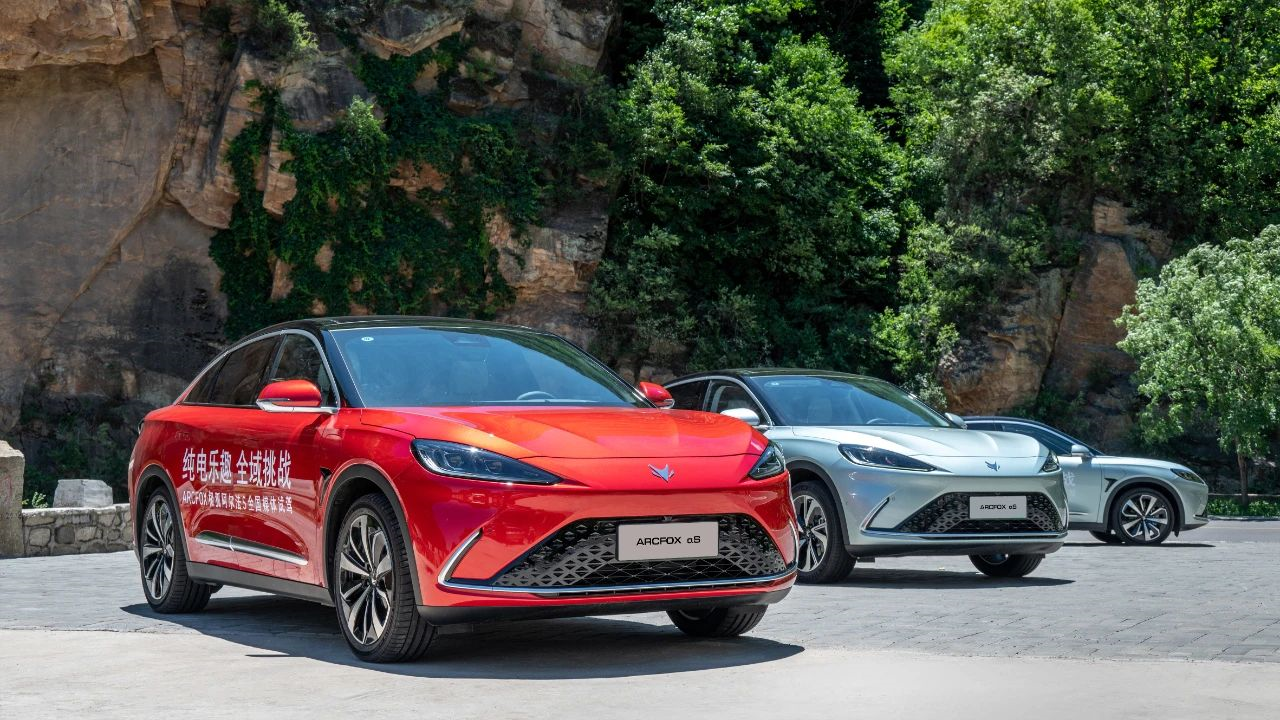
In terms of user experience, when ACC adaptive cruise control is not enabled, ARCFOX αS’s lane departure warning can effectively warn the driver by vibrating the steering wheel and seat, displaying a red lane warning on the head-up display when the vehicle deviates from the lane.
However, during the test drive, ARCFOX αS’s success rate in automatically changing lanes by using the turn signal was not high. On a deserted highway, ARCFOX αS can easily change lanes by signaling. However, even if there are vehicles in the rear side and there is no acceleration indication, ARCFOX αS still judges that there is a vehicle behind and cannot change lanes.
Smart technology not only includes intelligent driving but also intelligent cabin and other aspects. Although ARCFOX αS has the longest 20.3-inch 4K multi-screen among global mass-produced cars, the human-computer interaction experience is just average.
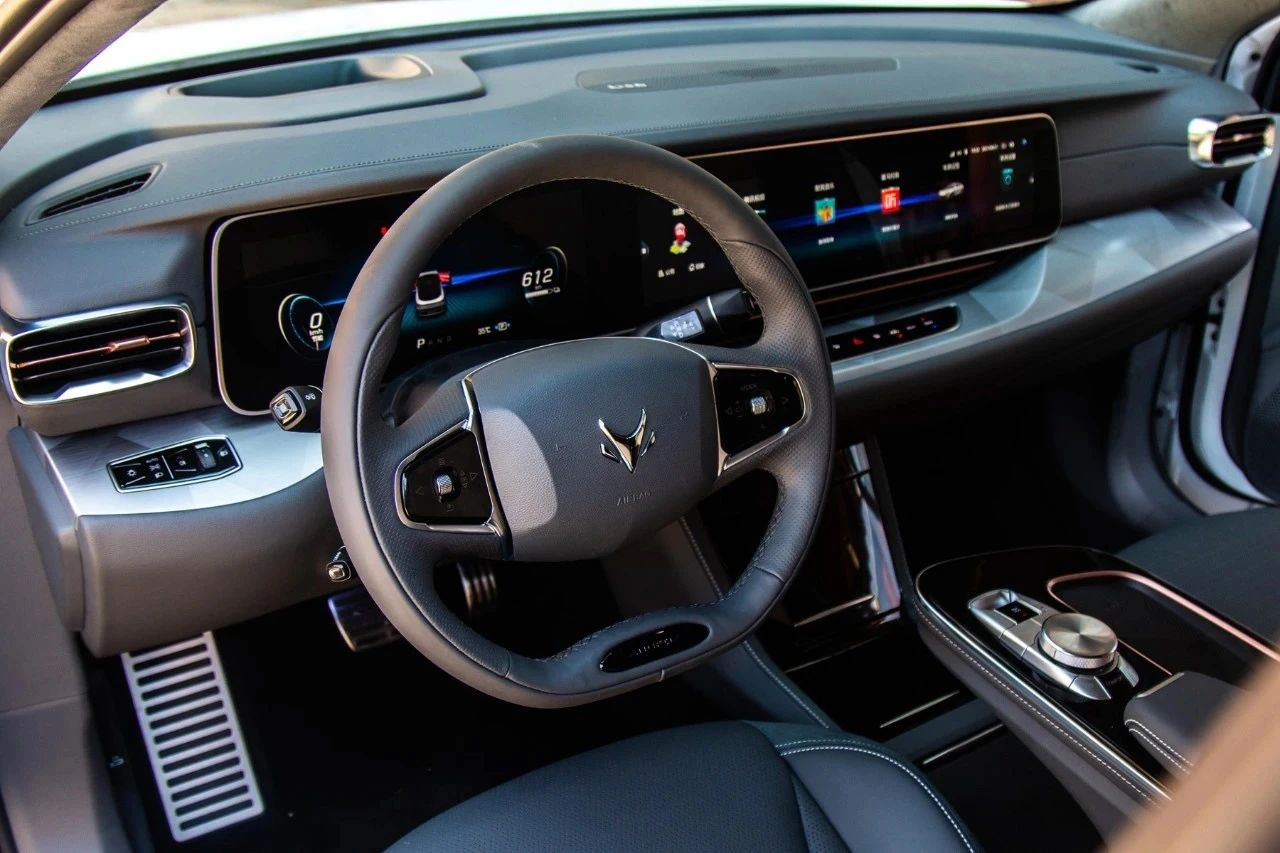
ARCFOX αS supports both screen touch and central armrest knob control, but the hierarchical system with too many layers makes us impatient and want to control through the screen. However, the functional interface is often far away from the driver’s screen, requiring the driver to stretch and reach for it.
For example, when we tried to turn off the simulated audio, the old driver sitting in the driver’s seat was overwhelmed by the level-by-level control, and finally, I sitting in the co-driver’s seat turned off the sound on the right screen. But what if there is no one in the co-driver’s seat? I think many people will be impatient to find a chance to stand up and control through the screen, which is neither convenient nor safe.However, ARCFOX αS is only the second car of the young brand- Great Wall\’s ARCFOX, and the ARCFOX αS built on the IMC intelligent module architecture has OTA capability, which can upgrade,iterate and optimize the intelligent experience.
“Conclusion”
Previously, my impression of the ARCFOX αS was more about its identity as a Huawei’s autonomous driving partner. However, after I personally test drove the ARCFOX αS, its surprisingly high-level driving experience, the long-range version with a range of 708 km, and the high energy conversion rate in real experience have left me with a deep impression. Without exaggeration, in terms of mechanical quality, I think the ARCFOX αS is among the top in the 300,000 yuan level.
This article is a translation by ChatGPT of a Chinese report from 42HOW. If you have any questions about it, please email bd@42how.com.
